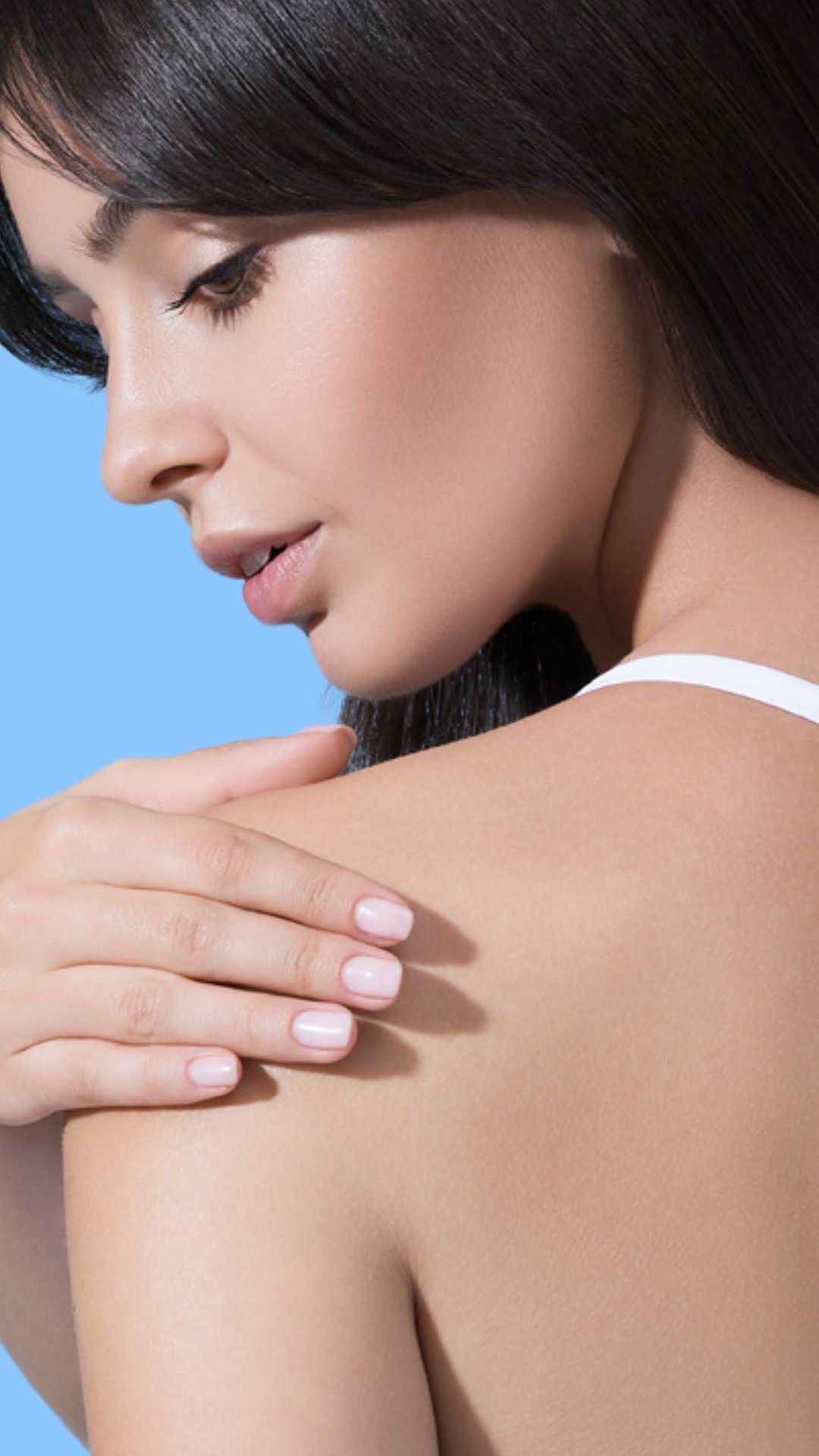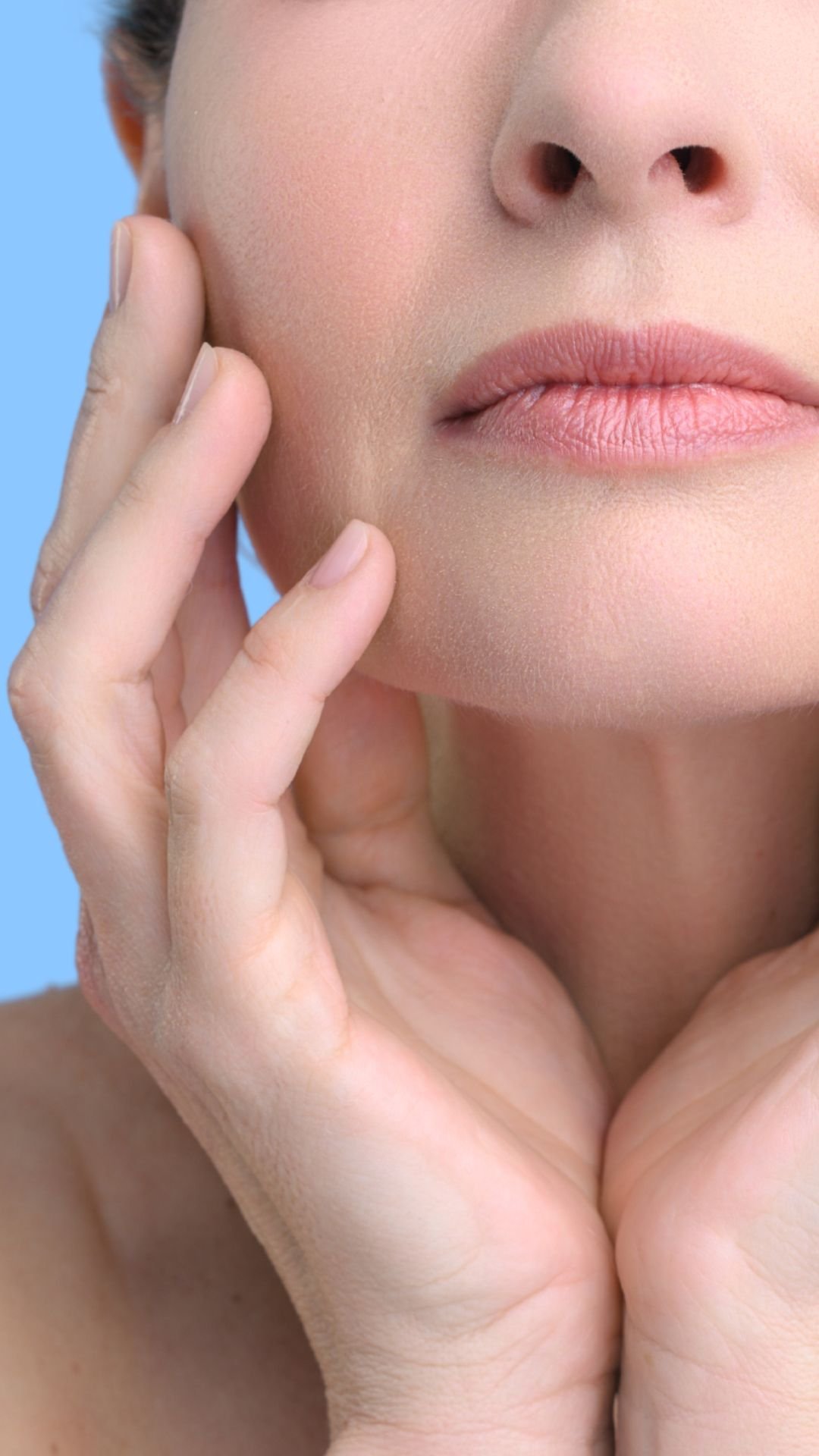Sunscreens help to protect the skin from the harmful solar radiation, which include ultraviolet UVA and UVB, visible (VL) and infrared (IR) radiation. The effects of UVA radiation on the skin are not immediate, and include accelerated ageing (photo-ageing) and tumour formation. The symptoms of UVB radiation, unlike UVA, are noticeable almost immediately after sun exposure, such as the formation of erythema or burns [2]. Visible light can contribute to hyperpigmentation and, like infrared radiation, penetrates the dermis, causing a warm sensation and perpetuating erythema [3].
.png?width=800&height=500&name=blog%20800x500%20(6).png)
.png?width=500&height=500&name=blog%20mniejsze%20500x500%20(6).png)
What to look for when choosing a sunscreen?
The Polish Dermatological Society recommends that preparations containing UV filters, used in spring and summer, should show a minimum of SPF 30 radiation protection [1]. However, it is worth choosing the highest photoprotection available, which is guaranteed by products with SPF 50+, which stop approximately 98% of the UVB radiation reaching the skin [4].
The UVA protection factor is also important while choosing a sunscreen product. A frequently used parameter is the PPD factor (Persistent Pigment Darkening), the value of which indicates how many times the dose of UVA radiation absorbed by the skin after application of a sunscreen is reduced compared to the dose absorbed by unprotected skin. According to the European Commission's recommendation, the minimum UVA protection of a sunscreen must be at least 1/3 of the UVB protection (SPF). When this condition is met, the UVA label in a circle is placed on the packaging [5].
For comprehensive protection against the full spectrum of the solar radiation, it is advisable to opt for products containing UVA and UVB filters, but also protection against visible light (VL) and infrared radiation (IR).
.png?width=800&height=500&name=blog%20800x500%20(19).png)
.png?width=500&height=500&name=blog%20mniejsze%20500x500%20(9).png)
When choosing a sunscreen, it is worth paying attention to its declared water resistance.
During the summer, we are often accompanied by water activities that can affect the durability of the radiant protection products used. The manufacturer's declaration of the product's water resistance will ensure that the product retains its UV protective properties after two 20-minute water baths, with protection of no less than 50% of the declared SPF value.
Another important feature of UV filter products is their photostability. Declaring a product photostable means that the filter particles have the ability to maintain their protective properties unchanged for the specified period of time during which it is exposed to the sunlight.
Dermedic SUNBRELLA dermocosmetics are the right choice when it comes to products that protect against radiation. They provide effective and long-lasting protection against the full spectrum of the sun's UVA, UVB, VL and IR radiation, but also ensure intensive care for sensitive skin of various types. They are photostable and waterproof, plus they contain thermal water with soothing properties.
.png?width=800&height=500&name=blog%20800x500%20(20).png)
A distinguishing feature of SUNBRELLA dermocosmetics for children and babies is the inclusion
of a vitamin D3 precursor, which is converted to vitamin D3 when exposed to UVB radiation, supplementing its deficiency in the skin.
Remember:
- Apply an appropriate amount of sunscreen
Apply the product in an amount of 2 mg/cm2 of skin to ensure adequate protection [1].
An amount of cream applied to two fingers of the hand – index and middle finger – is approximately needed to protect the skin on the face, scalp and neck.
- A higher SPF value does not guarantee longer safe time spent in the sun
The SPF (Sun Protection Factor) is a factor indicating how many times the dose of UVB radiation is necessary to induce erythema after the application of a protective product compared to the dose needed to induce erythema in unprotected skin. Please note that this does not equate to increased safety in case of prolonged sun exposure.
- Use sunscreen on a cloudy day
UVA radiation penetrates through clouds and window glass and reaches the dermis, contributing to premature skin ageing, pigmentation disorders and cancer development. For this reason, year-round, daily use of sun protection products is essential for effective protection.
- No sunscreen product stops UV rays completely
A sunscreen with SPF 50 protects the skin against UVB radiation by approximately 98%. It is worth remembering that proper photoprotection is not only about using sunscreen, but also about wearing protective clothing, headgear and sunglasses.
.png?width=800&height=500&name=blog%20800x500%20(21).png)
.png?width=500&height=500&name=blog%20mniejsze%20500x500%20(15).png)
[1] Narbutt J., Wolska H., Kaszuba A., Langner A., Lesiak A., Maj J., Placek W., Reich A., Rudnicka L., Zegarska B. Fotoprotekcja. Rekomendacje Polskiego Towarzystwa Dermatologicznego. Część 2: Stosowanie preparatów zawierających filtry UV. Przegląd Dermatologiczny, 2018; 105: 30-40.
[2] Ebisz M., Brokowska M. Szkodliwe oddziaływanie promieniowania ultrafioletowego na skórę człowieka. Hygeia Public Health. 2015; 50(3): 467-473.
[3] Furukawa J. Y., Martinez R. M., Morocho-Jácome A. L., Castillo-Gómez T. S., Pereda-Contreras V. J., Rosado C., Baby A. R. (2021). Skin impacts from exposure to ultraviolet, visible, infrared, and artificial lights – a review. Journal of Cosmetic and Laser Therapy, 23(1–2), 1–7.
[4] Keurentjes AJ, Jakasa I, van Dijk A, et al. Stratum corneum biomarkers after in vivo repeated exposure to sub-erythemal dosages of ultraviolet radiation in unprotected and sunscreen (SPF 50+) protected skin. Photodermatol Photoimmunol Photomed. 2022; 38: 60–68.
[5] Antonik D., Denys B., Góra K., Zdziennicki W., Zimnicki P., Lato M., Iberszer K., Litwiniuk M., Zaniuk M., Hurkała K,. The impact of ultraviolet radiation on the skin and the role of photoprotection – the review of the literature. Journal of Education, Health and Sport. 2023;37(1):80-98.
[6] Pereira LA, Luz FB, Carneiro CMMO, Xavier ALR, Kanaan S, Miot HA. Evaluation of vitamin D plasma levels after mild exposure to the sun with photoprotection. An Bras Dermatol. 2019; 94(1): 56-61.

.png?width=1440&height=437&name=blog%20zdj%C4%99cie%20g%C5%82%C3%B3wne%20%20(2).png)










